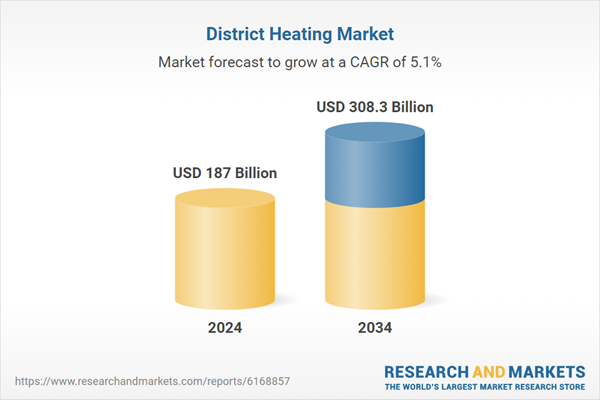By utilizing a centralized approach to heat production and distribution, these systems ensure consistent energy availability for residential, commercial, and industrial users. This resilience promotes economic stability and supports sustainability goals by reducing reliance on fossil fuels and lowering carbon emissions. To that end, in June 2024, Hewlett Packard Enterprise and Danfoss joined forces to reduce data center energy usage. Their modular design integrates heat capture systems to accelerate AI and compute tasks at the edge, while excess heat is reused externally. It aligns with global efforts to mitigate energy-related risks and build more resilient energy infrastructures for the future.
The overall district heating market is categorized based on application, source, and region.
The geothermal segment will record a promising CAGR through 2032, due to its increasing recognition as a sustainable and reliable heat source. Geothermal energy provides a consistent and renewable supply of heat, reducing dependency on fossil fuels and minimizing GHG emissions. Additionally, technological advancements have made geothermal extraction more efficient and cost-effective, encouraging its integration into district heating systems. Governments and environmental policies also support geothermal adoption for district heating applications, adding to segment growth.
The residential segment will acquire a remarkable district heating market share by 2032, owing to growing urbanization and the need for efficient, sustainable heating solutions in densely populated areas. Homeowners are seeking eco-friendly options to reduce energy costs and carbon footprints. District heating systems provide a reliable and convenient heating source, eliminating the need for individual boilers and maintenance. Additionally, government incentives and regulations promoting energy-efficient buildings are ushering in the adoption of district heating in new residential developments.
Europe district heating market will infer a notable CAGR during the forecast period, because of the commitment to reducing carbon emissions and achieving climate goals. European countries are investing heavily in renewable energy sources and advanced heating infrastructure. Urbanization and the modernization of aging heating systems catapult the need for more efficient, centralized solutions. Additionally, European Union policies and funding support the development of sustainable district heating networks, encouraging public and private sectors to adopt these systems for improved energy efficiency and environmental impact reduction. These factors will bolster the regional industry growth.
Comprehensive Market Analysis and Forecast
- Industry trends, key growth drivers, challenges, future opportunities, and regulatory landscape
- Competitive landscape with Porter’s Five Forces and PESTEL analysis
- Market size, segmentation, and regional forecasts
- In-depth company profiles, business strategies, financial insights, and SWOT analysis
This product will be delivered within 2-4 business days.
Table of Contents
Companies Mentioned
The key companies profiled in this District Heating market report include:- A2A S.p.A.
- Alfa Laval
- Antin Infrastructure Partners
- BEW Berlin Energy and Heat
- CenTrio
- Cordia
- Danfoss
- E.ON
- EDF
- EnBW Energie Baden-Württemberg
- ENGIE
- Fortum
- Göteborg Energi
- Hafslund
- Iren S.p.A.
- Kelag Energie & Wärme
- Keppel
- Korea District Heating
- LOGSTOR Denmark Holding
- Nevel
- Ørsted
- Ramboll
- RWE
- Shinryo Corporation
- Statkraft
- STEAG
- Vattenfall
- Veolia
Table Information
| Report Attribute | Details |
|---|---|
| No. of Pages | 135 |
| Published | August 2025 |
| Forecast Period | 2024 - 2034 |
| Estimated Market Value ( USD | $ 187 Billion |
| Forecasted Market Value ( USD | $ 308.3 Billion |
| Compound Annual Growth Rate | 5.1% |
| Regions Covered | Global |
| No. of Companies Mentioned | 29 |









